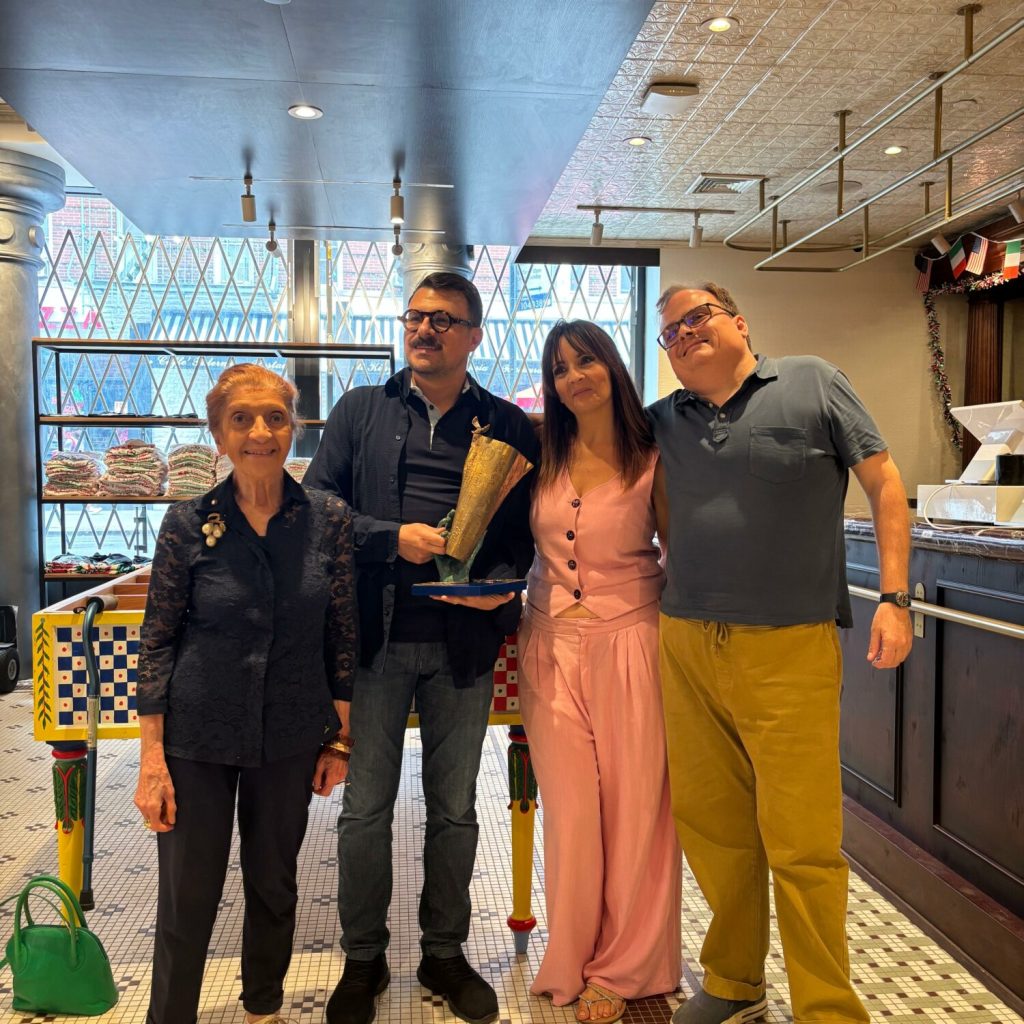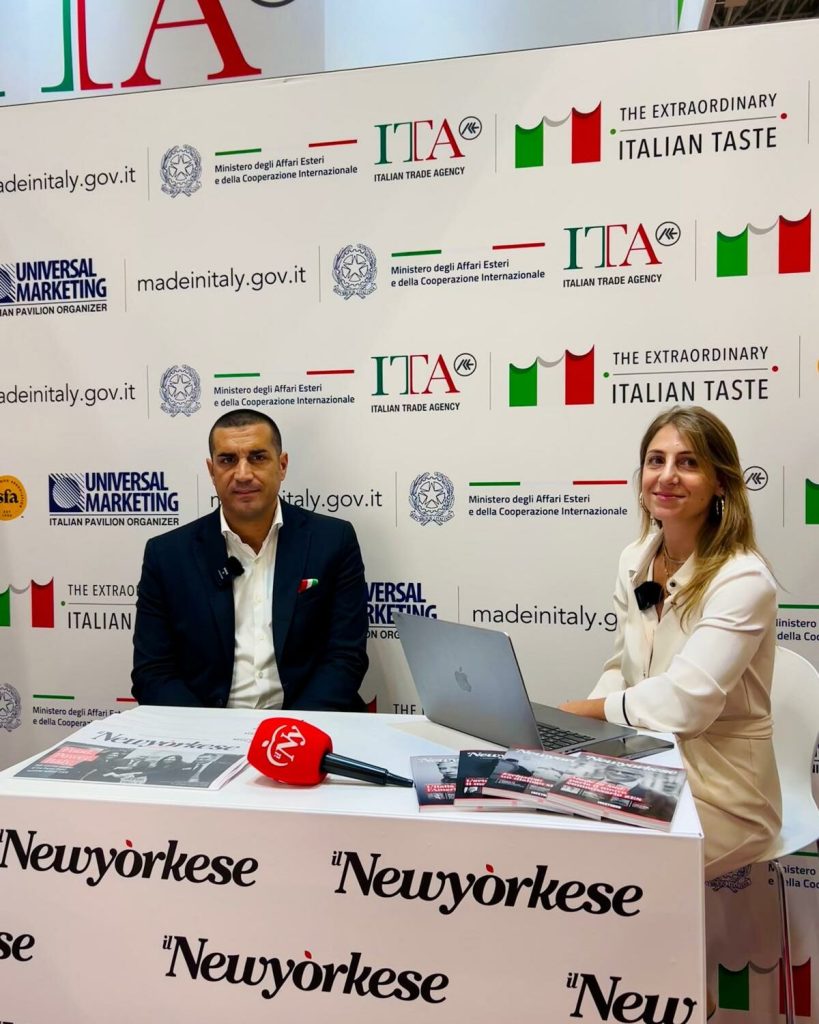In the vibrant setting of Little Italy, among the historic streets of Mulberry and Grand Street, the “Sons of the Sea Award” was presented, an award with a strong symbolic and cultural value that celebrates the roots of Italian emigration to the United States. An award not only artistic, but identity-based: a poetic tribute to the migrants who, setting sail from the port of Naples, charted the path to a new life in America.
The ceremony took place in the heart of the neighborhood that was the crossroads of Italian waves of immigration: in what was once called “the Poland,” the gateway to the city for newcomers, later renamed Little Italy. The streets themselves tell the geography of origins: Mulberry Street for the Campanians, Elizabeth Street for the Sicilians. Today, that past lives on and is renewed thanks to initiatives like this one.
The “Sons of the Sea Award,” designed and created by internationally renowned artist Dante Mortet, is much more than a sculpture. It is a relic of memory, a golden thread – literally and symbolically – that unites two shores of the Atlantic: Naples and New York. “This thread was held on one side by the migrants, and on the other side by the families left behind,” recalled Silvana Mangione, deputy secretary of the CGE, with emotion. “A thread that was sometimes broken, but today we want to reknit it with pride.
The sculpture, a collaboration between Dante Mortet and his son Lorenzo, represents precisely that invisible and indestructible bond between those who have left and those who have built a future elsewhere. “Children of the sea,” Mortet calls them: “those who carry within themselves the story of a departure and the strength of an arrival.”
Among the promoters of the event was the Red Sox Studio, a new point of reference for the Italian American community in New York, founded by Patrick O’Poyle and John Viola, also known for the “Italian American Podcast,” which aims to transmit the culture of its origins to new generations. “Not just Italian culture, but Italian American culture,” Viola explained, “A reality that has evolved but needs to stay connected to its roots.
The award ceremony boasts a highly symbolic location: Castle Clinton (formerly known as Castle Garden), the first landing point for migrants before Ellis Island opened. Millions of Italians landed here between 1860 and 1960, in the largest exodus in contemporary history. Precisely to commemorate this passage, the award was dedicated to them: to the fathers and mothers, the men and women who crossed the ocean “with silent courage,” in search of hope.
To underscore the historical importance of the recognition, Silvana Mangione’s speech brought attention back to the deep roots of Italian emigration, which go back as far as the 17th century, with the Waldensians. But it was especially after the unification of Italy that the exodus became massive. “When Italy was unified under one flag, many local identities felt disoriented. So many looked elsewhere for that lost serenity, and they found it here, in New York.”
The “Sons of the Sea Award” thus becomes a tangible symbol of a shared identity, a cultural bridge between two worlds. It is a testimony of a people who have never forgotten where they come from. An award that reminds how the sea does not divide, but unites. And how every departure, if guided by hope, can become the beginning of something great. A sculpture that will remain in New York, a memory that will stay alive. A golden thread, woven of courage and dreams, that today is proudly re-knotted between the streets of Little Italy and the docks of the port of Naples.
The article Sons of the Sea Award: in New York a golden thread between Naples and Little Italy comes from TheNewyorker.



